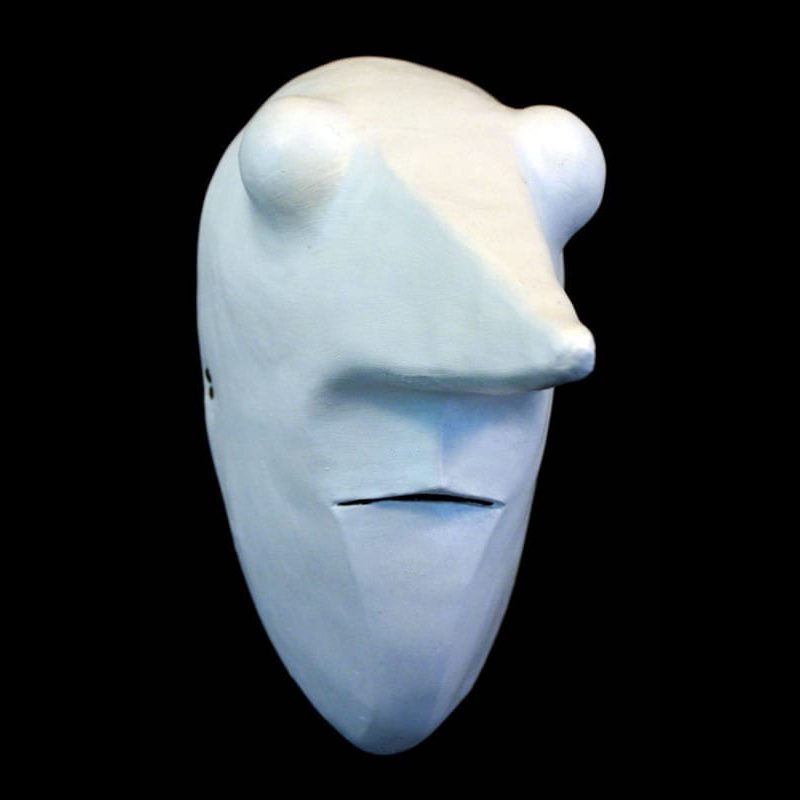Nosey
Nosey was inspired by one of the masks used at the Lecoq School in Paris France in 1986 by Jonathan Becker during that part of his studies. The masks at the school were designed and built by a mask maker in Basel, Switzerland. The masks were made out of paper in the style of the venetian masks. The larval masks were used in the teaching to inspire play in the students.
During an improvisation class Jonathan remembers a problem he was unable to solve or understand at the time. He was performing in class and the teacher kept saying over and over again, “for us,” “for us.” Jonathan was unable to solve the problem that day and was asked to sit back down and observe. It was not until later that he understood that the teacher was simply asking for the mechanical act of turning the mask out to the audience in moments of shared discovery rather than play it in profile. This lesson defined Jonathan’s entire approach to performance in later years. The struggle was to understand that what we do as performers and story tellers is for the audience rather than for the experience of the performer. This is one of the many lessons of the mask.
$112.00
| 1-11 | 12+ |
| $112.00 | $100.00 |
Share
Description
Nosey was inspired by one of the masks used at the Lecoq School in Paris France in 1986 by Jonathan Becker during that part of his studies. The masks at the school were designed and built by a mask maker in Basel, Switzerland. The masks were made out of paper in the style of the venetian masks. The larval masks were used in the teaching to inspire play in the students.
During an improvisation class Jonathan remembers a problem he was unable to solve or understand at the time. He was performing in class and the teacher kept saying over and over again, “for us,” “for us.” Jonathan was unable to solve the problem that day and was asked to sit back down and observe. It was not until later that he understood that the teacher was simply asking for the mechanical act of turning the mask out to the audience in moments of shared discovery rather than play it in profile. This lesson defined Jonathan’s entire approach to performance in later years. The struggle was to understand that what we do as performers and story tellers is for the audience rather than for the experience of the performer. This is one of the many lessons of the mask.






